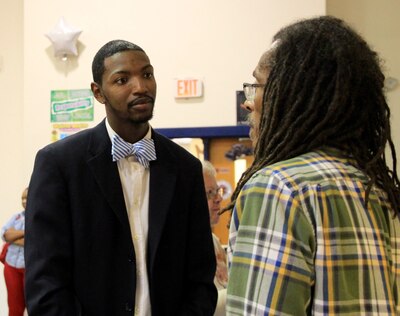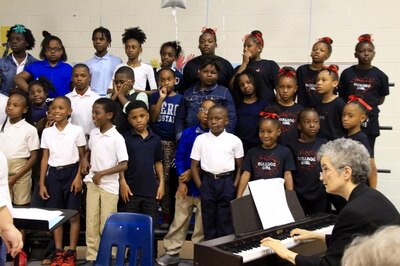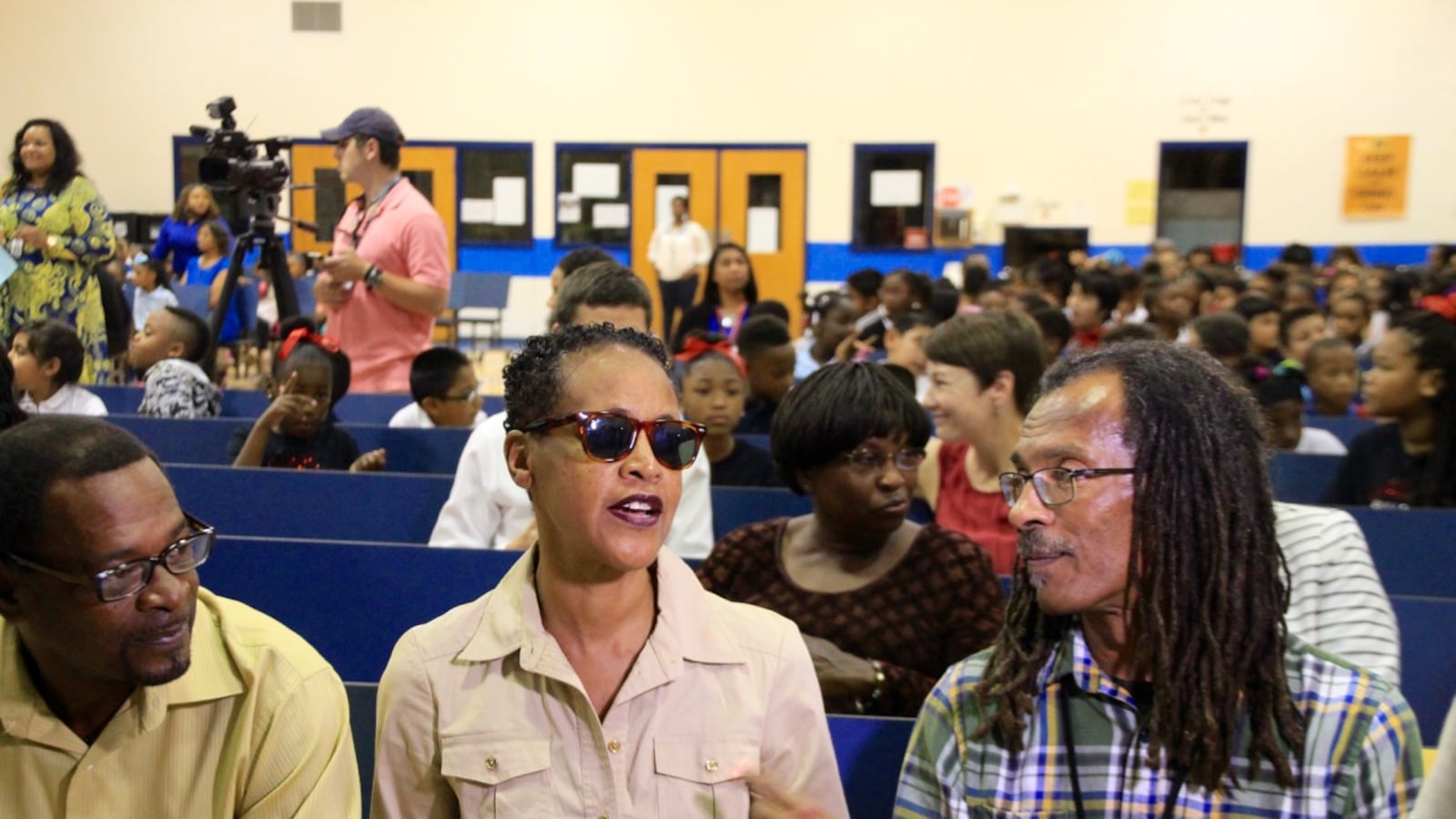In October of 1961, three children with police escorts became the first black students to attend the previously all-white Bruce Elementary School in midtown Memphis.
Fifty-five years later, the same three people, now in their early 60s, revisited the historic school on Monday amid cheers and celebration, but also an awareness that education equity remains elusive in public schools.
The school honored three of the 13 men and women, known as the ‘Memphis 13,’ who bridged the racial divide beginning with four elementary schools in the former Memphis City Schools on Oct. 3, 1961.
“The Memphis 13 is a great indicator for why Black Lives Matters is important still for our community,” principal Archie Moss Jr. said in introducing the honorees. “The Memphis 13 made a statement that we will not sit by idly, but we will advocate for what our students need.”

Bruce Elementary is a very different school from the one that Dwania Kyles, Harry Williams and Michael Willis entered as first-graders. In 1961, Bruce was pristine, the books were new, and its students were mostly from higher income families — a school that Moss, as a black man, acknowledged “wasn’t originally designed for me.” Today, it’s a majority black school, and almost all its students are considered economically disadvantaged.
The families of Kyles, Williams and Willis, who now goes by Menelik Fombi, were recruited to integrate Bruce seven years after the historic Brown v. Board of Education U.S. Supreme Court decision that declared state laws unconstitutional in establishing separate public schools for black and white students. The transition happened without violence, but members of the Memphis 13 recall that the experience was challenging every day.
“It was very difficult to find 12 black families (one family had two children in the 13) who were willing to send their 5- and 6-year-olds through that,” Kyles told the crowd. “Our families were fearless. I’m honored to be here today … to be recognized for what we did 55 years ago.”
Moss elaborated after the ceremony that he hopes education equality becomes a main focus of Black Lives Matter, which has had a national focus on police brutality, and has incited debate on whether or not the movement belongs in education reform.
“What the Memphis 13 did was so brave and significant, but it just gets us in the door,” Moss said. “I want to make it so that every child in Memphis and across the nation has access to equal education, regardless of their zip code.”
U.S. Rep. Steve Cohen, a Democrat from Memphis, spoke to the assembly about America’s growing disparity in income, which he called the “racism of today.”
“Even though doors are no longer closed because of race, they are closed because of income inequality,” said Cohen, who is white.
Though students of color now attend any school in the city, all schools are not equal, Fombi told Chalkbeat later. “For students living in great poverty, there is a great lack of resources,” he said. “This still falls on African Americans disproportionately.”

The Memphis 13 were recruited by the NAACP with the promise of attending schools closer to their neighborhoods.
They were honored last year with historical markers placed at Bruce, Gordon, Rozelle and Springdale elementary schools. The group garnered renewed interest five years ago, when Daniel Kiel, a Memphis School of Law associate professor, directed a 45-minute documentary film about the students.
“It’s important to honor people who made progress possible, even at a time when we’re not satisfied with the progress,” said Kiel, who was present at the celebration. “It shows where we are, and how far we’ve come, and what there is still left to do.”

